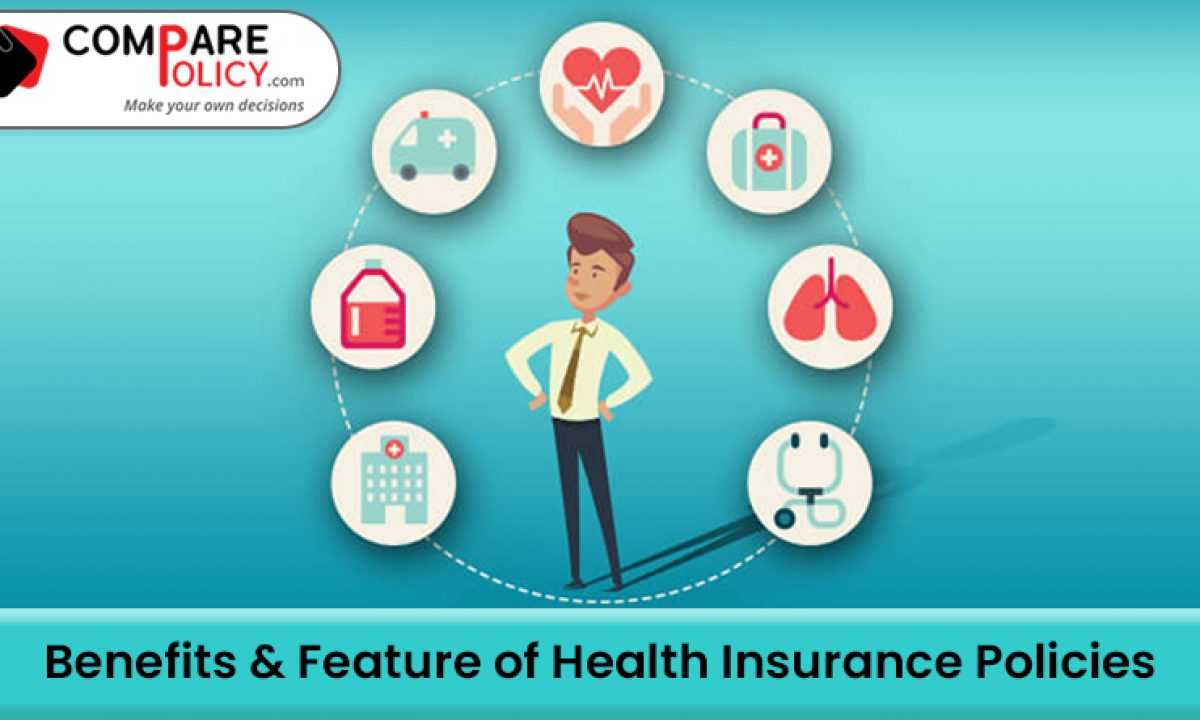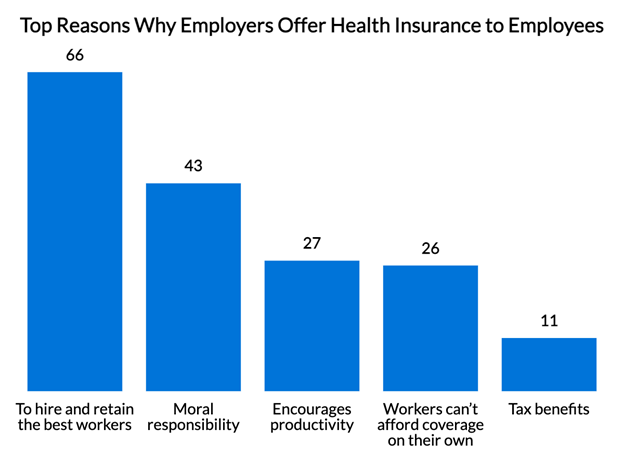The 2-Minute Rule for Medicare Advantage Agent
Table of ContentsMedicare Advantage Agent Things To Know Before You Get ThisSome Ideas on Medicare Advantage Agent You Should KnowThe Only Guide to Medicare Advantage Agent

adheres to from confusing the fairly young age profile of the uninsured with the better health and wellness, on average, of more youthful persons. This obscures the link between health and wellness condition and health insurance policy. For those without access to office health and wellness insurance coverage, inadequate wellness is a possible obstacle to purchasing nongroup insurance coverage because such insurance coverage may be extremely valued, omit preexisting problems, or be simply inaccessible. The number of without insurance Americans is not particularly huge and has actually not changed in recent years. 7 out of 10 participants in an across the country representative study believed that fewer Americans lacked health and wellness insurance policy than really do(Fronstin, 1998). Approximately half(47 percent )believed that the variety of individuals without health and wellness insurance lowered or remained constant over the last fifty percent of the last years(Blendon et al., 1999). This drop of practically 2 million in the number of people 'without insurance policy (a reduction
of around 4 percent)is absolutely a favorable adjustment. With a softer economy in 2000 the most recent reported gains in insurance policy protection may not proceed(Fronstin, 2001 ). The decrease in the variety of without insurance will not proceed if the economic situation remains sluggish and health treatment costs proceed to outmatch rising cost of living. This is due to the fact that the information were gathered for a period of strong financial efficiency. Of the estimated 42 million individuals who were uninsured, all however about 420,000(about 1 percent)were under 65 years of age, the age at which most Americans come to be qualified for Medicare; 32 million were grownups in between ages 18 and 65, about 19 percent of all adults in this age; and 10 million were youngsters under 18 years old, concerning 13.9 percent of all children (Mills, 2000). These price quotes of the number of individuals uninsured are produced from the annual March Supplement to the Existing Population Study (CPS), carried out by the Census Bureau. Unless otherwise kept in mind, nationwide estimates of individuals without medical insurance and proportions of the population with different type of insurance coverage are based on the CPS, one of the most widely utilized source of price quotes of insurance protection and uninsurance prices. These surveys and the price quotes they yield are described briefly in Table B. 1 in Appendix B - Medicare Advantage Agent. These surveys vary in dimension and sampling approaches, the concerns that are inquired about insurance policy
All about Medicare Advantage Agent
insurance coverage, and the time duration over which insurance policy coverage or uninsurance is gauged(Lewis et al., 1998, Fronstin, 2000a ). Still, the CPS is particularly useful because it creates yearly estimates reasonably rapidly, reporting the previous year's insurance policy protection approximates each September, and due to the fact that it is the basis for a consistent collection of estimates for more than two decades, enabling evaluation of trends in protection over time.

The smart Trick of Medicare Advantage Agent That Nobody is Talking About
Over a three-year duration starting early in 1993, 72 million individuals, 29 percent of the U.S. populace, lacked protection for a minimum of one month. Within a solitary year(1994), 53 million individuals experienced a minimum of a month without insurance coverage(Bennefield, 1998a). 6 out of every 10 uninsured grownups are themselves utilized. Although functioning does improve the probability that a person and one's relative will have insurance, it is not a warranty. Also participants of families with 2 full time wage income earners have almost a one-in-ten chance of being uninsured (9.1 percent uninsured price)(Hoffman and Pohl, 2000 ). The partnership between health insurance coverage and accessibility to care is well developed, as documented later in this phase. Although the partnership between health insurance policy and health outcomes is neither direct neither basic, a comprehensive medical and health services research literary works web links health and wellness insurance coverage
to better accessibility to care, much better quality, and improved personal and population health standing. The 2nd record, on personal health results for without insurance grownups, is stood for by the inner circle of the number, while the third report, on household well-being, includes the subjects of the 2nd report but stresses a various device of evaluation, particularly, the family. The 6th record in the series will certainly offer information concerning methods and campaigns carried out in your area, statewide, or across the country to deal with the absence of insurance policy and its damaging effects. Degrees of analysis for analyzing the results of uninsurance. This conversation of health and wellness insurance coverage concentrates mostly on the U.S. population under age 65 due to the fact that practically all Americans 65 and older have Medicare or various other public protection.
It concentrates especially on those without any type of wellness insurance coverage for any type of size of time. The troubles encountered by the underinsured are in some areas comparable to those faced by the without insurance, although they are typically less severe. Uninsurance and underinsurance, nevertheless, include noticeably different policy concerns, and read the full info here the strategies for resolving them may vary. Throughout this study and the 5 reports to follow, the primary emphasis is on individuals without wellness insurance coverage and thus no help in spending for healthcare beyond what is available with charity and safety web establishments. Wellness insurance is an effective variable influencing receipt of treatment because both patients and doctors respond to the out-of-pocket rate of solutions. Medical insurance, nonetheless, is neither required neither adequate to acquire access to medical services. Nonetheless, the independent and straight impact of health and wellness
insurance coverage on access to health solutions is well established. Others will obtain the healthcare they require even without health and wellness insurance, by paying for it out of pocket or seeking it from providers that provide treatment free or at extremely subsidized rates. For still others, health insurance policy alone does not guarantee receipt of care as a result of various other nonfinancial barriers, such as a lack of wellness treatment companies in their community, limited accessibility to transportation, illiteracy, or linguistic and social distinctions. Official study about uninsured populations in the USA dates to the late 1920s and very early 1930s when the Board on the Price of Treatment generated a this content collection of records about financing doctor office brows through and hospital stays. This concern became salient as the numbers of clinically indigent climbed during the Great Depression. Empirical researches continually support the link in between access to care and enhanced wellness end results(Bindman et al., 1995; Starfield, 1995 ). Having a routine source of care can be considered a predictor of gain access to, rather than a direct action of it, when health and wellness results are themselves used as access indications. This extension of the concept of accessibility measurement was made by the IOM Committee on Keeping Track Of Access to Personal Healthcare Services(Millman, 1993, p. Whether parents are guaranteed shows up to impact whether their youngsters receive care as well as just how much careeven if the youngsters themselves have insurance coverage(Hanson, 1998). The health of parents can influence their capacity to care for their youngsters and the degree of family members stress. Bothering with their children's accessibility to care is itself a resource of anxiety for parents. Three chapters follow in this report. Phase 2 offers a summary of how employment-based medical insurance, public programs and private insurance policies run and communicate to supply considerable yet incomplete insurance coverage of the united state populace. This consists of a testimonial of historic learn this here now trends and public laws influencing both public and private insurance, a conversation of the interactions among the various sorts of insurance, and an exam of why individuals move from one program to another or end up
